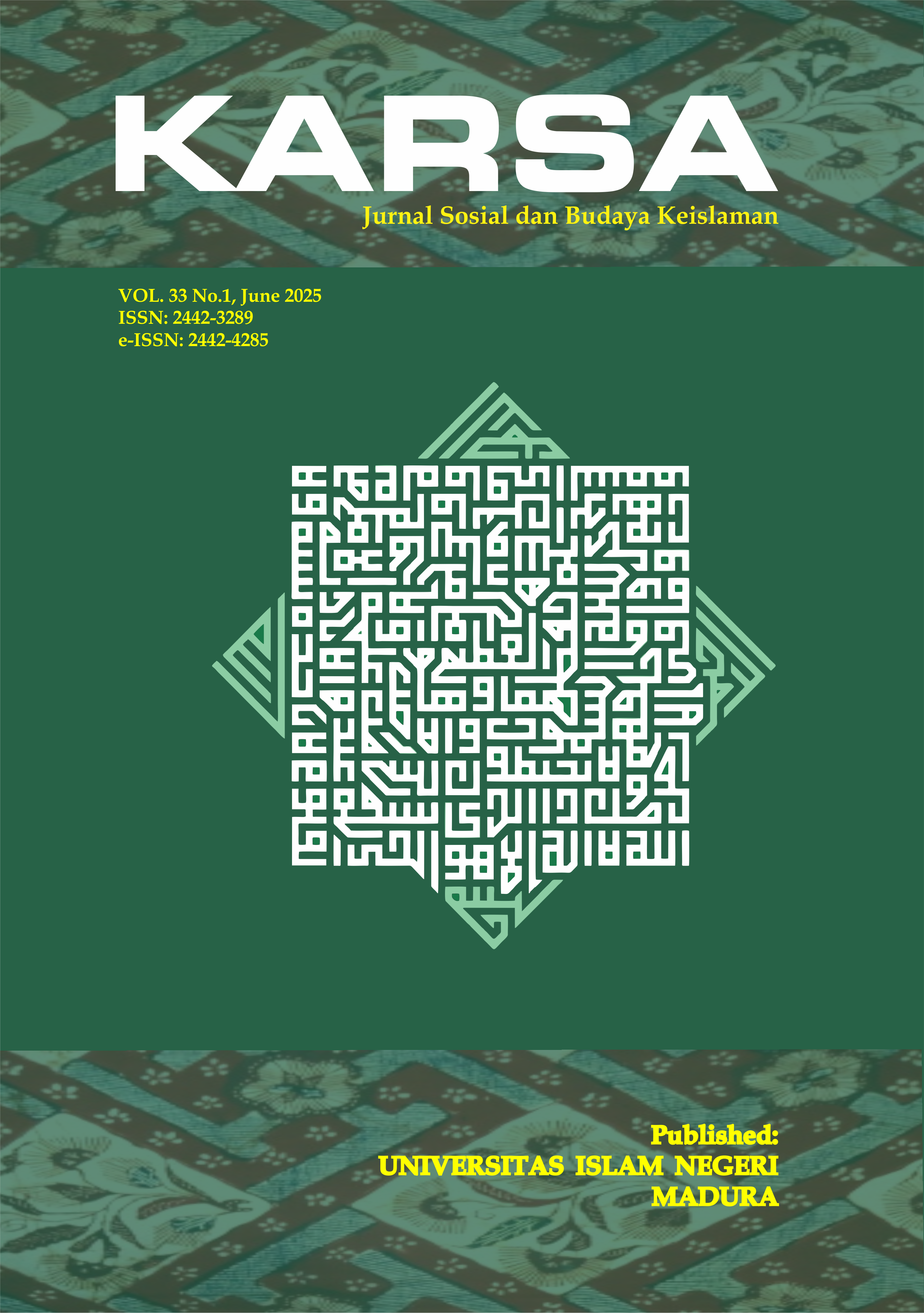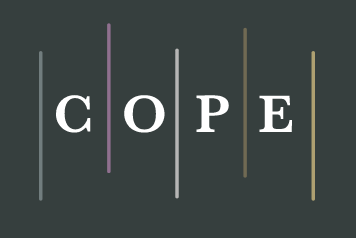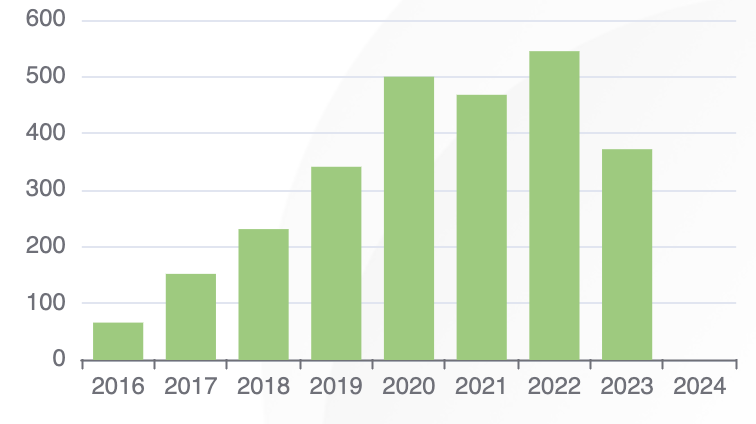Community Policing Enactment in Crime Prevention at South Jakarta
 Abstract views: 310
,
Abstract views: 310
,
 PDF downloads: 220
PDF downloads: 220
Abstract
Community policing, a proactive crime prevention strategy, faces unique challenges in apartment-based urban environments like South Jakarta's Kalibata City Apartment complex. These communities are characterized by higher levels of individualism and lower social cohesion, making it difficult to establish effective community-police partnerships. The study, involving 360 randomly selected residents, found that the social fabric of apartment communities lacks the integration necessary for successful community-policing partnerships. The study also highlighted the socio-spatial characteristics of apartment complexes, such as high population density and vertical living arrangements, which significantly shape the feasibility and outcomes of community policing initiatives. This research contributes to the broader discourse on urban policing by identifying key gaps in existing practices and emphasizing the need for context-sensitive approaches.
Downloads
References
A. A., Boller-Piol, Gonzales C. D., Malapit K. M., Olivar L. S., Vega A. J., Villa E. B., and Dalugdog W. D. “Strengthening Community Mobilization Program: Its Implication on Building Police-Community Relations.” International Journal of Multidisciplinary: Applied Business and Education Research 5, no. (5) (2024): 1662–92. https://doi.org/10.11594/ijmaber. 05.05.17.
A., Butler, Zakimi N., and Greer A. “Total Systems Failure: Police Officers’ Perspectives on the Impacts of the Justice, Health, and Social Service Systems on People Who Use Drugs.” Harm Reduction Journal 19, no. (1) (2022): 48. https://doi.org/10. 1186/s12954-022-00629-1.
A. M., Headley, and Kalesnikaite V. “Exploring the Limits of Collaboration and the Fragility of Its Outcomes: The Case of Community Policing.” Public Administration Review 85, no. 2 (2025): 326–48. https://doi.org/10.1111/puar.13836.
A., Stephenson. “Police as Cop Show Viewers.” Crime, Media, Culture 18, no. (2) (2022): 265–81. https://doi.org/10.1177/ 17416590211005520.
B. E, Epoka. “Literature Review of Qualitative Data with Natural Language Processing.” Journal of Robotics Spectrum 1 (2023): 056–065. https://creativecommons.org/licenses/by-nc-nd/4.0/.
Crowe, Timothy, and Lawrence J Fennelly. Crime Prevention through Environmental Design. Elsevier, 2013.
E. B., Schaffer. Community Policing. Routledge, 2023.
F., Zaghloul, and Partridge J. “Enabling Policing to Be Better: Lessons from Two Case Studies in Police Collaboration.” Policing: A Journal of Policy and Practice 16, no. 4 (2022): 777–93. https://doi.org/10.1093/police/paac018.
Farizi, Baharudin Al, and Tri Susanto Setiawan. “Model Novi Amelia Tewas Bunuh Diri Dari Lantai 8 Apartemen Kalibata City.” KOMPAS, 2022.
Herman, Judith Lewis. Trauma and Recovery: The Aftermath of Violence--from Domestic Abuse to Political Terror. Hachette UK, 2015.
J., Rodriguez. “Carceral Connections: The Role of Policing in the Management of Public Housing in New York City.” Urban Studies 61, no. (3) (2024): 513–30. https://doi.org/10.1177/ 004209802311837.
J. Y., Dahl, N. R.. Fyfe, Gundhus H. O. I., Larsson P., Skjevrak P. E., Runhovde S. R., and Vestby A. “Old, New, Borrowed and Blue–Shifts in Modern Policing.” The British Journal of Criminology 62, no. (4) (2022): 931–74. https://doi.org/10. 1093/bjc/azab085.
Jo-Anne M, Wemmers. Restoring Justice for Victims of Crime: A New Perspective on Desirable Outcomes. Amsterdam: Kugler Publications, 2012.
K., Kuen, Weisburd D., White C., and J. Hinkle C. “Examining Impacts of Street Characteristics on Residents’ Fear of Crime: Evidence from a Longitudinal Study of Crime Hot Spots.” Journal of Criminal Justice 82 (2022): 101984. https://doi.org/ 10.1016/j.jcrimjus.2022.101984.
Kuswandoro, Wawan Edi. Kebijakan Publik Perspektif Politik: Advokasi Civil Society dan Kepartaian. Universitas Brawijaya Press, 2024.
L., Barao, and Farrell C. Wethersfield Police Department Organizational Climate Study, 2022.
L. G., Minkova. “The Fifth International Crime: Reflections on the Definition of Ecocide.” Journal of Genocide Research 25, no. (1) (2023): 62–83. https://doi.org/10.1080/14623528.2021. 1964688.
Loader, I, and N Walker. “Civilizing Security Cambridge, UK: Cambridge Univ.” Press, 2007.
Lum, Cynthia, and Christopher S Koper. “Evidence-Based Policing.” The Oxford Handbook of Evidence-Based Crime and Justice Policy, 2024, 245–64.
M., Irvita, and Asriani A. “Transparency and Accountability in the Justice System: Building Public Trust and Justice: The Role of Public Trust in Fair Law Enforcement.” Priviet Social Sciences Journal 5, no. 4 (2025): 26–40. https://doi.org/10.55942/ pssj.v5i4.367.
M., Taylor, Johnston K. A., and Ryan B. “A Community Engagement Approach to Natural Hazard Communication.” In The Handbook of Crisis Communication, 327–42, 2022. https://doi.org/10.1002/9781119678953.ch22.
M., Zamiri, and Esmaeili A. “Methods and Technologies for Supporting Knowledge Sharing within Learning Communities: A Systematic Literature Review.” Administrative Sciences 14, no. (1) (2024): 17. https://doi.org/10.3390/admsci14010017.
Naibaho, Rumondang. “Ini Penyebab Tabung Setrika Uap Meledak Di Apartemen Kalibata City.” detikNews, 2023. https://news. detik.com/berita/d-6784893/ini-penyebab-tabung-setrika-uap-meledak-di-apartemen-kalibata-city#:~:text=Tabung setrika uap milik salah satu pengusaha laundry,mengatakan insiden tersebut terjadi karena faktor human error.
Ningrum, Cindra May. “Angka Kriminalitas Di 6 Kota Wilayah DKI Jakarta, Jumlah Kejahatan Ada Yang Mencapai 9.083 Kejadian, Kota Mana?,” n.d. https://www.ayojakarta.com/ metropolitan/7613804111/angka-kriminalitas-di-6-kota-wilayah-dki-jakarta-jumlah-kejahatan-ada-yang-mencapai-9083-kejadian-kota-mana.
O., Awoyemi, Attah R. U., Basiru J. O., and Leghemo I. M. “A Community-Policing Innovation Model to Build Sustainable Trust and Effectively Reduce Crime in Urban Areas.” International Journal of Multidisciplinary Research and Growth Evaluation 6, no. (1) (2025): 848–53.
Office for Victims of Crime. “Vision 21: Transforming Victim Services.” Office of Justice Programs, US Department of Justice, 2013.
S., Amir, R. Ramadhan, D. M., and Nastiti A. City Profile: Jakarta, 2022.
S., Chang, and Smith M. K. “Residents’ Quality of Life in Smart Cities: A Systematic Literature Review.” Land 12, no. (4) (2023): 876. https://doi.org/10.3390/land12040876.
S. J., Nass, Amankwah F. K., DeVoe J. E., Benjamin G. C., and National Academies of Sciences Engineering, and Medicine. Community-Centered and Community-Engaged Care. Edited by Ending Unequal Treatment. Strategies to Achieve Equitable Health Care and Optimal Health for All, 2024.
S., Varga. Scaffolded Minds: Integration and Disintegration. MIT Press, 2025.
S, Dawadi, Shrestha S, and Giri R.A. “Mixed-Methods Research: A Discussion on Its Types, Challenges, and Criticisms.” Journal of Practical Studies in Education 2, no. (2) (2021): 25–36. https://doi.org/10.46809/jpse.v2i2.20.
T., Diphoorn, and van Stapele N. “What Is Community Policing?: Divergent Agendas, Practices, and Experiences of Transforming the Police in Kenya.” Policing: A Journal of Policy and Practice 15, no. (1) (2021): 399–411. https://doi. org/10.1093/police/paaa004.
Terpstra, Jan. “Community Policing in Practice: Ambitions and Realization.” Policing: A Journal of Policy and Practice 4, no. 1 (2010): 64–72. https://doi.org/10.1093/police/pap029.
Tim, Newburn. Criminology. 3rd ed. London: Routledge, 2017.
Trojanowicz, Robert C, and Bonnie Bucqueroux. Community Policing: How to Get Started. Routledge, 1998.
The journal operates an Open Access policy under a Creative Commons Non-Commercial Share-Alike license. Authors who publish with this journal agree to the following terms:
- Authors retain copyright and grant the journal right of first publication with the work simultaneously licensed under a Creative Commons Attribution License that allows others to share the work with an acknowledgement of the work's authorship and initial publication in this journal.
- Authors are able to enter into separate, additional contractual arrangements for the non-exclusive distribution of the journal's published version of the work (e.g., post it to an institutional repository or publish it in a book), with an acknowledgement of its initial publication in this journal.
- Authors are permitted and encouraged to post their work online (e.g., in institutional repositories or on their website) prior to and during the submission process, as it can lead to productive exchanges, as well as earlier and greater citation of published work.














